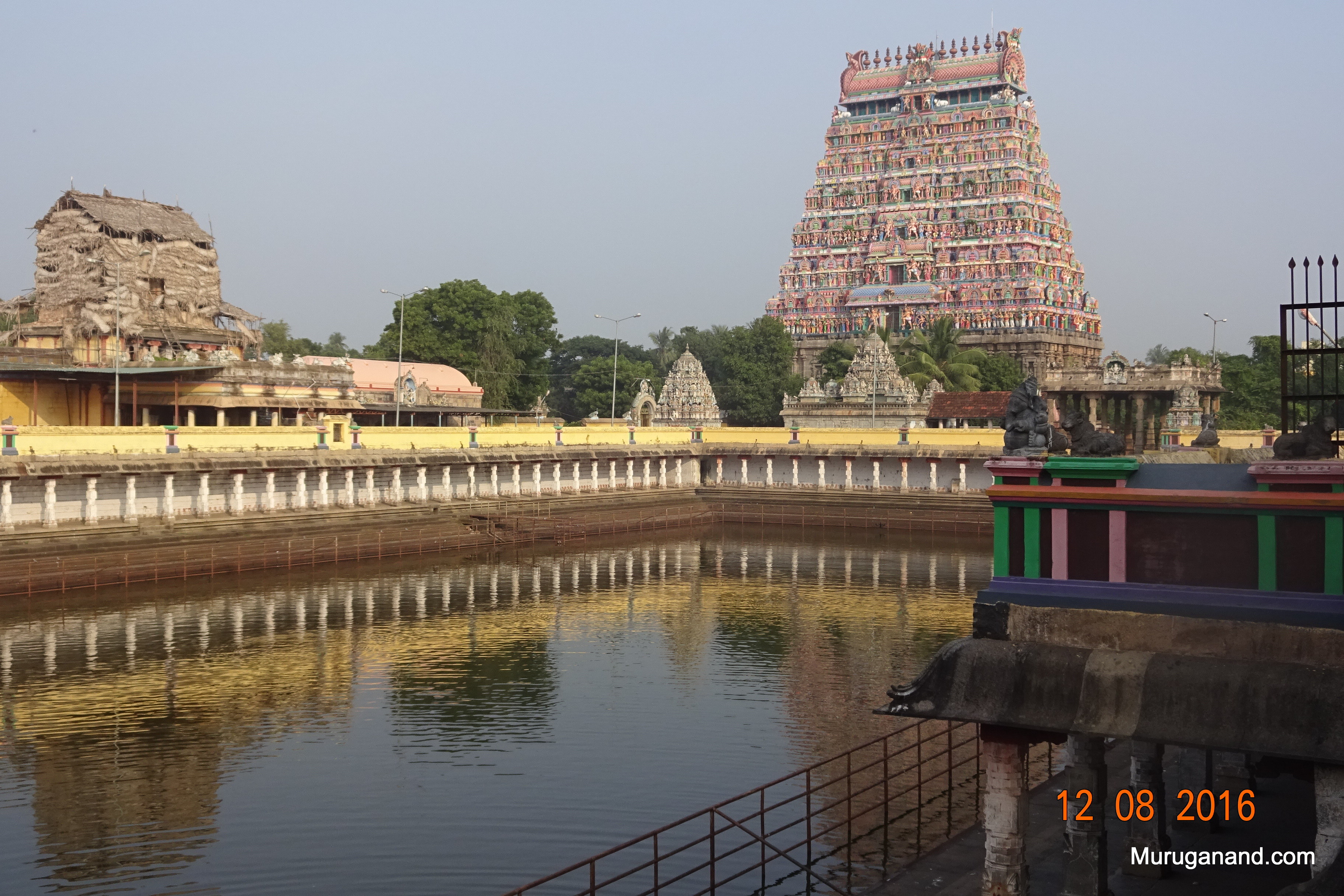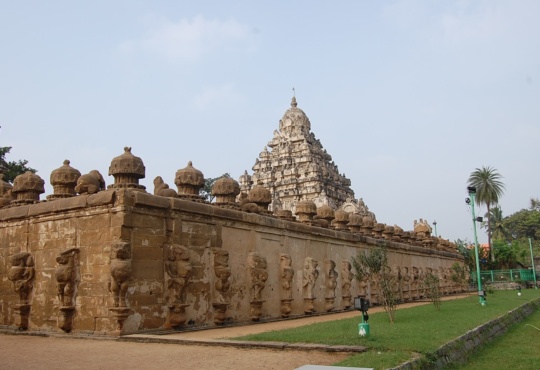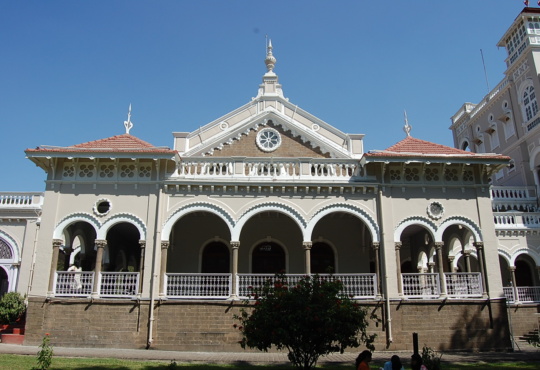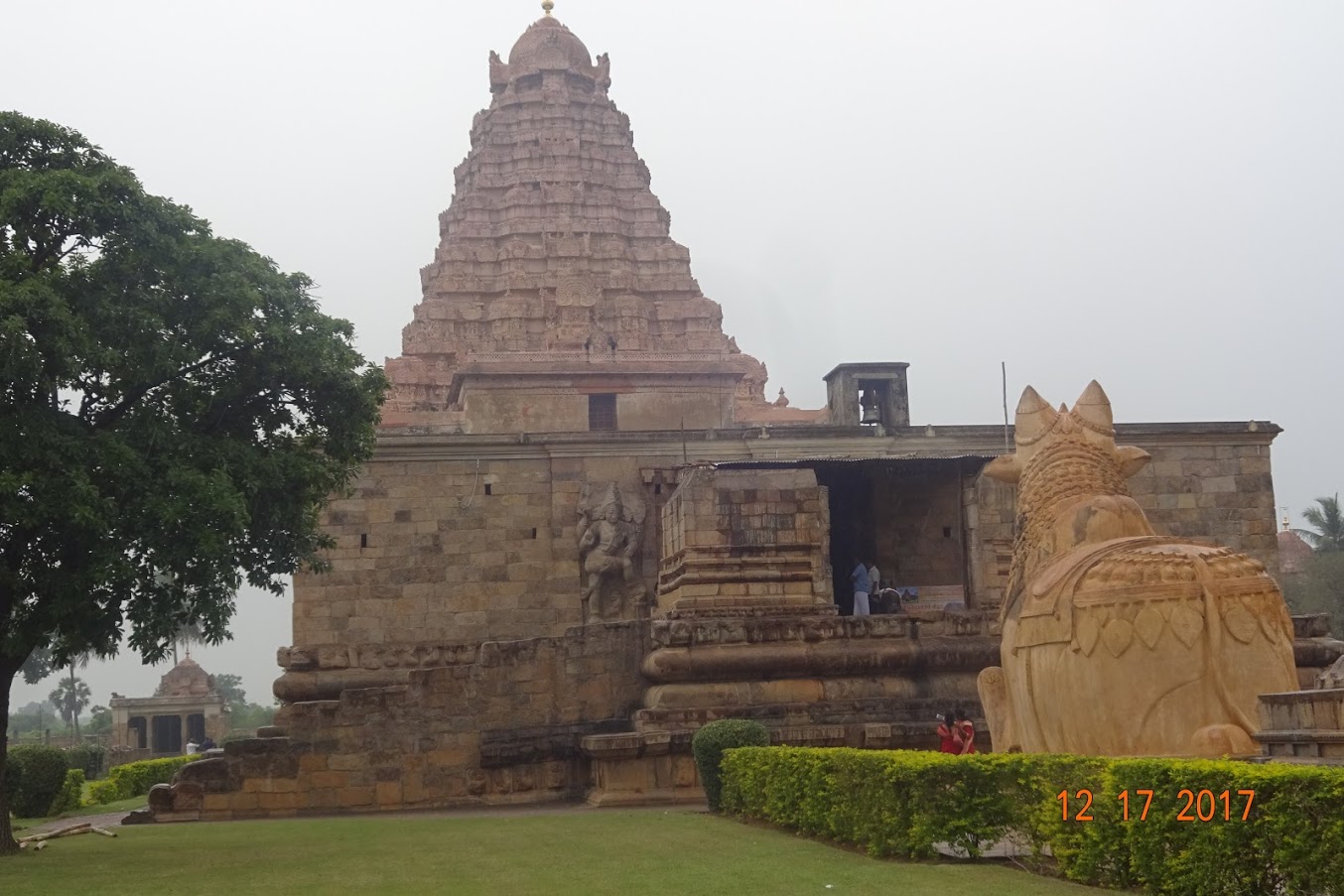
Tamilnadu- Chidambaram (2016)
Thillai Nataraja Temple has many names- Koil, The Temple, Puliyur, Chitrambalam, Thiruchitrambalam, Tiruchitrakoodam and Chidambaram. It is also called Bhooloka Kailasam (heaven on earth) by Saivites. The temple is known as the site where Ananda Thandava (Siva’s dance of bliss) took place. Earliest history comes from Sthala Purana (mythological story of temple as believed by devotees). The Chozha king, Hiranyavarman is credited with the building of the oldest shrine in this temple, Tirumulasthanam ( Siva in swayambu lingam form) on the banks of Sivaganga tank probably in 430-458 CE.
There are 304 inscriptions on the stone walls of the temple which gives the history of the temple and surrounding Tamil provinces from 10th century onward. For earlier history one has to resort to Tamil literature.
Chidambaram temple, being the temple of the Lord of Dance is an encyclopedia for Bharata Natyam. All 108 karanas (postures) of Bharata Natyam are carved on the passages of its Gopurams (four entry towers). Other temples followed its lead. Chidambaram conducts a 10 day annual festival of Bharata Natyam (Natyanjali) every Ferbruary. Many other places follow this tradition.
The leaders of Bhakti movement, Appar, Sambandar and Sundarar visited the temple in seventh century and composed many hymns. The fourth saint, Manickavasakar wrote his memorable works here in ninth century and believed to have attained salvation in this temple. Nandanar (7th or 8th century), a Dalit fulfilled his dream of visiting the temple and attained mukthi here. He is regarded as one of the 63 notable Saivite saints. The eminent Siddha, Tirumular (7th or 8th century) mentioned the temple in many places in his Tirumanthiram.
It is the place where early manuscripts of Tevaram (musical compositions on Siva) was found in tenth century. Emperor Raja Raja Chozhan I (947-1014 CE ) and his guide Nambiandar Nambi tracked them down to a locked room in Chidambaram temple and compiled the first seven books of Saivism (thirumurai). In addition, the emperor hired experts to compose music, singers to sing the hymns and also built halls to perform concerts. These efforts have left an indelible mark on the society.
The temple was protected and promoted by most of the Tamil kings over many centuries- Chozha, Pandya, Pallava and Chera. Vijaya Nagara Kings, Nayaks and Marathas also showed their reverence to this temple. History has recorded the invasion and vandalism of the temple by Malik Kafur (1302-1311 CE) and Hyder Ali (around 1780).
It is interesting to note that Vishnu also has a notable and well regarded shrine in the vicinity of Nataraja shrine. Vishnu as Govindaraja Perumal looks at Nataraja in an inclined posture. Brahma is in standing posture. One can have a rare darshan (look) of all three deities from this spot. Saints Kulasekara Azhvar, Thirumangai Azhvar and Ramanujar visited this Divya Desam (one of the 108 holy Vishnu temples). This shrine (unlike Nataraja shrine) is administered by Government of Tamilnadu.
The greatest contribution of Tamils to the world of art is the art of making the bronze statue. Among them the single most notable statue is that of Nataraja introduced by Chola kings.The philosophy behind the Ananda Thandava, the dance of bliss is well understood and appreciated by Eastern philosophers as well as Western scientists.
The Nataraja temple is managed by resident priests known as Dikshidars for many centuries. They were once 3000 in number and now they are estimated to be 360. These priests have defended the temple and its properties, even at the cost of their lives during foreign invasions. They consider the job of a priest in Nataraja temple as a honor and privilege. When the Government of Tamilnadu tried to take away the administration from them, they went all the way to supreme court and won the case in 2014.
There are 7 prayers offered daily to the ruling deity, Nataraja. During the key prayer rituals, Saivite hymns are sung by any devotee who knows to sing. At that time, the temple space is filled with sounds of cymbals, drums, conch and damaru. The combination of hymn, tune and music provides a memorable experience.
A word of caution to people who may visit the temple: The unique shrine is the Mystic Hall known as Chidambara Rahasyam where the secret of Chidambaram is revealed. It is in Chitrambalam. The hall is adjacent to the dancing hall of the ruling deity Nataraja. The hall has a trellis like fence (a partition with small openings) and so it is hard to see what’s going on inside. Plan ahead with a Dikshidar for the time and right location to watch this service.
The album starts with an aerial view and a hand drawn map of the site. They will be useful to locate most of the shrines in the temple.
[supsystic-gallery id=25]



